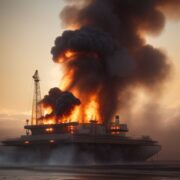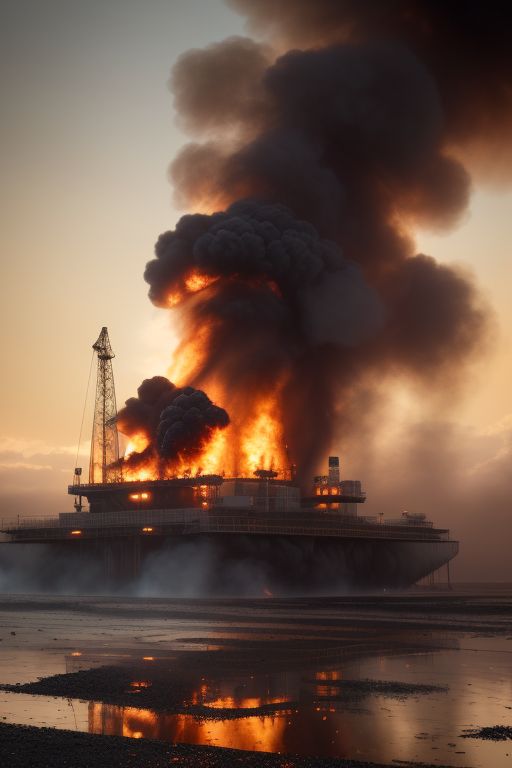Oil Rig Disasters of the 20th and 21st Century
Major Oil Rig Disasters of the 20th and 21st Centuries
Oil rigs are marvels of engineering, floating or fixed platforms that enable the extraction of oil and gas from beneath the ocean floor. However, these structures are not without risk. Over the decades, several major disasters have occurred, resulting in loss of life, environmental damage, and changes in industry regulations. In this blog post, we will explore some of the most significant oil rig disasters, their causes, the frequency of such incidents, and the deadliest of them all. If your family has been affected by an oil rig accident, you need experienced oil field accident attorneys on your side. At the Low Law Firm, we represent individuals who have been injured in any type of oil field related accident.
1. Piper Alpha Disaster (1988)
 Location: North Sea, off the coast of Scotland
Location: North Sea, off the coast of Scotland
Date: July 6, 1988
Fatalities: 167
Cause: A gas leak led to a series of catastrophic explosions and fires. Maintenance work had been improperly conducted, leading to a condensate pump being started without a safety valve, causing the leak.
The Piper Alpha disaster remains the deadliest offshore oil rig disaster in history. The rig was operated by Occidental Petroleum and produced both oil and gas. On the night of the disaster, routine maintenance led to a series of failures and miscommunications. The initial gas leak was followed by explosions and a fire that engulfed the platform. The disaster highlighted significant safety shortcomings and led to sweeping regulatory changes in the industry. For more detailed information this article by The Chemical Engineer provides great insight, and outlines the changes that occurred after.
2. Deepwater Horizon (2010)
Location: Gulf of Mexico, USA
Date: April 20, 2010
Fatalities: 11
Cause: A blowout preventer failed to seal a well, leading to an uncontrollable release of oil and gas. This resulted in an explosion and a massive oil spill.
The Deepwater Horizon disaster is one of the most well-known oil rig disasters, largely due to the extensive environmental damage it caused. The rig, operated by Transocean and drilling for BP, suffered a blowout that led to a series of explosions and a fire. The subsequent oil spill lasted for 87 days, releasing millions of barrels of oil into the Gulf of Mexico. The disaster prompted significant changes in drilling regulations and safety practices. The EPA website offers information related to the rig disaster and litigation that followed.
3. Alexander L. Kielland (1980)
Location: North Sea, Norway
Date: March 27, 1980
Fatalities: 123
Cause: A fatigue crack in one of the rig’s five legs caused it to collapse.
The Alexander L. Kielland was a floating accommodation platform, providing living quarters for workers on nearby rigs. A sudden storm caused one of the legs to collapse due to a previously undetected fatigue crack. The platform capsized, leading to the deaths of 123 workers. This disaster led to increased attention to the structural integrity and safety inspections of offshore platforms.
4. Ocean Ranger (1982)
Location: Grand Banks, off the coast of Newfoundland, Canada
Date: February 15, 1982
Fatalities: 84
Cause: A combination of severe weather, human error, and mechanical failure.
The Ocean Ranger was a semi-submersible mobile offshore drilling unit. During a severe storm, waves broke through a porthole, causing electrical and mechanical failures. The rig eventually capsized, resulting in the loss of all 84 crew members. The incident led to improvements in design standards and emergency response procedures.
Common Questions
What causes oil rig disasters?
Oil rig disasters can be caused by a variety of factors, including:
Mechanical failures (e.g., blowout preventers, structural failures)
Human error (e.g., improper maintenance, operational mistakes)
Natural events (e.g., storms, earthquakes)
Technical and design flaws
Often, it is a combination of these factors that leads to a disaster.
How often do oil rig explosions occur?
Oil rig explosions are relatively rare, considering the number of rigs operating globally. However, when they do occur, they tend to have severe consequences. The exact frequency varies, but major incidents (those causing significant loss of life or environmental damage) occur less frequently due to improved safety measures and regulatory oversight.
What is the deadliest oil rig disaster?
The deadliest oil rig disaster in history is the Piper Alpha disaster of 1988, which resulted in 167 fatalities. This incident significantly shaped the industry’s approach to safety and risk management.
The history of oil rig disasters highlights the inherent risks of offshore drilling and the need for rigorous safety standards. While technological and regulatory advancements have reduced the frequency and severity of such incidents, the potential for disaster remains. Each of the major incidents discussed here has led to lessons learned and improvements in the industry, aiming to prevent future tragedies and protect both human life and the environment.

